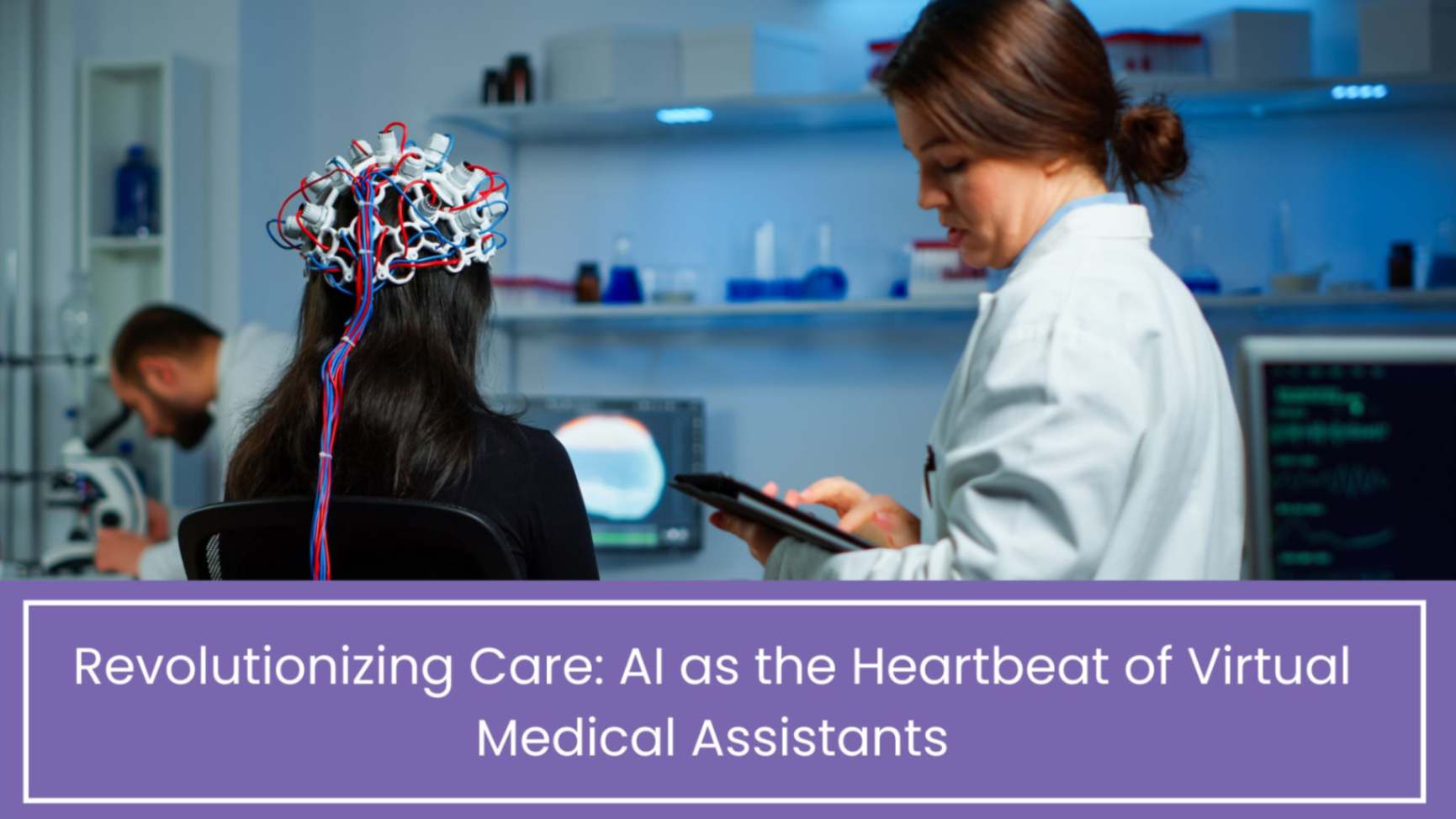Role of AI in Shaping Virtual Medical Assistant Capabilities
Role of AI in shaping virtual medical assistant capabilities handle many routine tasks with ease-from setting up appointments and patient registration to sending medication reminders and at least handling simple queries on behalf of patients-so physicians may now invest their time on more complex medical care. Studies have shown that, for example, virtual assistants reduce staff burden by automating up to 30% of administrative work. What a boon to the patient: being chaperoned and guided with individualized advice by a chatbot, at any time outside working hours. Wearables can record data in real-time, with AI processing data changes that mean trouble and alerting the providers before escalation sets in. Altogether, these tools reduce costs and improve care delivery across the board.
Table of Contents
Impact of AI-Driven Virtual Medical Assistants on Administrative Workloads
Artificial-intelligence-based virtual assistants in the modern healthcare sector are launching varied assistance with paperwork and routine logistics. They facilitate triage and scheduling by being available 24/7 for appointment booking, reminders, and basic inquiries. For example, thinking about a chatbot, it could confirm appointment bookings directly with the patient or reschedule them at night hours, keeping the front desk phone lines free for other solicitations. One health system implemented digital scheduling automation and witnessed a 47% increase in the number of appointments booked digitally. They take care of billing questions, insurance verification, and referral coordination in the background. In contrast, home care facilities utilize AI chatbots and voice assistants (for example, Alexa Together) to respond to patient FAQs and sometimes address routine care requests: hands-free. Freeing providers from mounds of paperwork so that virtual medical assistants allow nurses and doctors to spend more time with patients and focus on critical patient care is becoming very effective..
Enhancing Patient Engagement and Quality of Remote Care
- Virtual assistants keep patients engaged while caring for them remotely. Website- or patient-portal-based chatbots provide answers to general queries concerning symptoms, drugs, or clinic hours at any time, thereby serving as virtual receptionists. For example, allowing appointments to be scheduled from a chat interface anytime gave patients more access and convenience. Such AI systems also notify patients about appointment reminders via text or email, which, in turn, cuts down drastically on no-shows. These assistants might also go beyond mere logistics to a proactive conversation concerning a particular matter-needing refill on medication or needing to receive care instructions from a healthcare practitioner. These days, chatbots have been developed by some health IT vendors, who have integrated them with pharmacy systems to immediately alert patients for medication refills and thereby improve adherence.
- Appointment Scheduling and Reminders: AI Bots manage bookings and confirmations outside working hours, freeing up staff and preventing no-shows.
- Patient Q&A and Triage: Conversational assistants respond to frequently asked questions, such as directions to clinics and preparation instructions for labs, triaging minor symptoms with suggestions for home care. This reduces call volume and wait time.
- Medication Management: Linked to the electronic health records, the virtual assistant sends refill reminders and instructions to patients to help enforce adherence to treatment plans.
- Remote Patient Monitoring: The AI analyses data gathered continuously from home-based devices like blood pressure cuffs or pulse oximeters. It detects slight health changes at an early stage and sends alerts to clinicians. Thus, proactive monitoring actually avoids complications from developing in patients by catching the issues before they even notice any symptoms.
- Chronic Disease Support: AI-based medical assistants offer support to patients in managing long-term health conditions. In a study of type 2 diabetes management, patients using the voice AI assistant titrated insulin better- achieving the treatment goals in 15 days as compared to 56 days for controls- and had 32% better medication adherence.
Overall, virtual medical assistants make care feel more connected. Patients get quick responses and tailored tips, which keeps them more involved in their own health. Providers, in turn, see better engagement metrics and higher patient satisfaction.
How AI Virtual Assistants Are Changing Clinical Decision-Making and Patient Safety
Apart from admin help, AI assistants are assisting clinical settings too. Advanced virtual assistants can integrate with electronic health records to implement clinician commands. For example, voice AI tools can transcribe doctors’ notes in real-time, with each provider saving several hours per week. According to industry analysts, by the year 2027, voice-activated documentation may save U.S. clinicians approximately $12 billion annually. However, there may be added benefits beyond saving money: These systems can also detect safety hazards. Some assistants constantly and silently monitor and analyze patient data for red flags, such as unsafe lab values, contraindicated drug actions, and so on, and immediately alert clinicians. These assistants scan records at lightning speed and propose potential diagnoses by identifying patients at risk, enabling physicians to make decisions faster, thereby driving them toward better outcomes. An AI in one setting reviewed a patient’s records and flagged an urgent office visit due to emerging symptomatology. Importantly, even in these cases, the AI suggestions cannot replace medical and clinical judgment; they serve only as a second set of eyes for the clinician to help ensure nothing is overlooked.
Rise of AI-Powered Mental Health and Wellness Assistants
The area in which virtual assistants are developing is in mental health support. Smartphone applications and chatbots such as Woebot and Wysa engage patients in therapeutic conversations and suggest self-help exercises. They provide CBT techniques, mood tracking, and coping tools all the time. This especially benefits younger or underserved groups that probably would shy from in-person therapy. This use is backed by early research; in one trial, a therapy chatbot helped its participants in significantly lower anxiety and depression symptoms as compared to the control group . Such AI therapists can guide through mindfulness exercises, promote good habits, and call emergency help if suicidal thoughts are detected. So, even though AI counselors can’t replace human ones, they do help to bridge the gaps in access. Being instantly available, and also anonymous, they enable their patients to seek help early on. The virtual wellness assistant could, for instance, check in on people daily with mood questions, suggest stress-relief activities, or alert a clinician if it detects worsening trends.
Medical Virtual assistants may also be adopted at home for purposes of therapy and rehabilitation. AI/VR tools such as the given VR headset being used by the patient exemplify how technology is facilitating new patient engagement techniques that promote both physical and mental well-being.
Future Trends for Home Health Care with Virtual Medical Assistant Integration
In the future, virtual assistants will find a much stronger use in home healthcare. Telehealth was on an upward trajectory when COVID-19 struck, and AI is next in line to enhance its capabilities. From 2025 onwards, it seems rational to believe home health service providers will be pairing smart monitoring alongside the production of state-of-the-art nursing care. Your voice assistant or wearable sensors might keep an ID on your vital signs all day long. The AI software can keep the data under criticism on a continuous basis: for instance, an AI nurse-assistant might alert an actual nurse if a patient records a higher blood pressure trend going too far away from the norm. The virtual assistants could also triage the telemedicine calls; an AI symptom checker could advise if a patient needs a video visit, needs an in-clinic visit, or could just as well stay at home with instructions. During video visits, AI scribes are already transcribing dialogues and highlighting pertinent medical terms. Some experimental ones are assessing the tone of patients’ voices or even examining facial features for signs of pain or anxiety.
For their own personnel, smart home speakers could make reminders for seniors to take their pills, report daily vitals, or make calls for help if a fall is detected. Major tech firms indeed work on adapting their voice platforms: for instance, Amazon’s Alexa Together now has health monitoring capabilities. The next-level use of Big Data could mean optimized scheduling of home visits by AI systems that factor staff skills, location, and patient needs. All these trends point to an era of proactive and personalized home care. Integration of virtual assistants at the home health workflows will only bring in efficiencies that will help the provider manage more patients without compromising on quality by 2025.
- How do AI virtual assistants improve appointment scheduling and no-show rates? An AI chatbot enables patients to book or reschedule appointments through an online interface, available 24 hours a day. Also, it sends reminder texts or calls prior to the scheduled appointment so that one can confirm or reschedule without involving any staff.Ledger of AI scheduling implementation shows huge soaring (e.g.plus 47% in one case) of online bookings and fewer visits missed.
- How do virtual assistants help in saving medication reminders? With installation, there are many AI assistants interfacing with pharmacy or EMR systems to automatically alert patients for refill or medication intake. For instance, the patient might receive a chat message on his or her cell saying, “Time for your blood pressure pill–do you need a refill?” Such kinds of reminders help build medicine regimen adherence in patients by keeping them on track.
- An exemplary medical assistant can accomplish more: symptom-followup and management of drugs. How do such assistants help in chronic disease management? With chronic diseases, monitoring symptoms, and vitals is considered so important. For example, voice AI coaching helped diabetics establish the right insulin doses and do so faster with goal completion. Bots used for chronic diseases can track diet, symptoms, and activity, then provide advice or alert patients in a tailored manner. Over the course of time, this constant and trusting guidance assists the patient in managing the disease more actively.
- Are AI medical assistants safe and accurate? When these AI assistants are adequately designed and monitored, they improve safety. They adhere to strict privacy rules (HIPAA), built upon medical protocols. Importantly, such assistance does not perform the final diagnosis, rather it gives a clincher that should be checked by a clinician. The AI, by analyzing intensive data in real time, may present an alert to providers of an issue they would have overlooked. Humans, however, do bear the final responsibility for all these decisions, utilizing AI as a tool to enhance both accuracy and speed.”
- Will AI virtual assistants replace healthcare staff? No. The goal is to augment, not replace, human care. AI handles routine, predictable tasks – freeing staff to focus on the complex, empathetic work that only humans can provide. Studies indicate that when virtual assistants automate scheduling and documentation, clinicians spend more time with patients. By boosting efficiency and reducing burnout, AI actually helps teams do more with the same resources.
By 2025, in all likelihood, the impact of reach-of-virtual medical assistants on healthcare delivery will remain uncontested. The AI-enabled tools lighten the administrative burdens, empower patient engagement, and even lend some support in clinical decisions to have better care. Therefore, medical bodies that would adopt the services of virtual assistants would experience an easing of workflows and the enhanced happiness of their patients. Practolytics presents itself as the thrust leading the integration of AI in healthcare with a view to facilitating providers to adopt such innovations. As the technology evolves, being informed and taking proactive steps will ensure that medical teams crowning the great virtues of virtual assistants for the best patient care that can be given.
Read More – From Chaos to Efficiency: A Small Practice’s Journey with a Virtual Assistant
Talk to Medical Billing Expert Today — Get a Free Demo Now!






